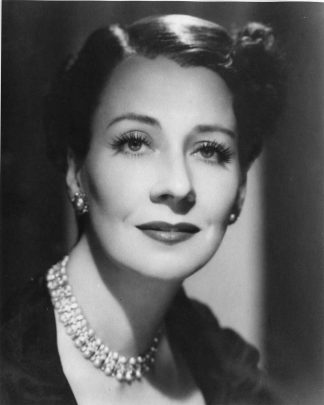By Allison Campbell-Jensen
“Hey, let’s put on a play!” has become very challenging in this time of COVID. Yet Meredith Kind, theater director for Chaska High School, found ways around the barriers to their fall theater production — with the help of the Libraries.
Kind’s friend, Karen Ellery, is a member of the radio performing Red Throated League, a subgroup of the Norwegian Explorers — the local Sherlock Holmes society. Ellery was part of the troupe who, during triennial Holmes conferences at the University, performed Holmes-themed radio plays by Edith Meiser, an American interpreter of the iconic English detective.
Ellery connected Kind with Timothy J. Johnson, E. W. McDiarmid Curator of the Sherlock Holmes Collections at the U of M Libraries. He provided her with Meiser’s treatment of the classic “Hound of the Baskervilles,” originally by Sir Arthur Conan Doyle. This is the first time in his 20-some years with the collection that the scripts have gone to a high school production.
Chaska’s ‘Hound’
“It was a great opportunity for actors to learn a new skill: voice-over work.”
—Meredith Kind, theater director for Chaska High School
The play has many parts for males and few for females, so Kind decided that students could audition for any part they wanted. For Sherlock Holmes, she chose Petra Causton, who, Kind says, already commanded the dialect and is a big fan of Holmes.
“She’s sassy and smart and everything I wanted Sherlock to be.” (Petra also is friend of Johnson’s family.)
While there were no gatherings for rehearsals — typically very popular in high school productions — the students were able to exercise their theatrical skills. One student wrote original music to open and close the six episodes of “Hound.”
For a physically distant photo shoot, the costumers found clothing in a variety of sizes for actors to wear, as they couldn’t be there to help them dress. The crew who usually would put together sets instead figured out props to use for the sound effects, the soundscape being crucial in radio.
And, says Kind, “It was a great opportunity for actors to learn a new skill: voice-over work.” They recorded their parts in mini-studios set up in band rehearsal rooms at the high school. Then one student did the entire audio edit, mixing voices, music, and sound effects. The students had no health problems, she says, and they are proud of the production.
Edith Meiser’s contribution
To solve the mystery of how Meiser’s radio play scripts arrived in the University of Minnesota Libraries, one must ask Johnson for the history. Meiser was a vaudeville actor who turned to writing radio plays. Her first Holmes tale, “The Adventure of the Speckled Band,” was broadcast on Oct. 20, 1930 and featured William Gillette as Holmes.
Gillette knew Doyle and asked him if it was all right to marry off Sherlock Holmes in the play he was writing. Doyle, tired of the character, responded, Johnson says, with “Marry him, murder him, I don’t care.”
Gillette regularly appeared in the play, and also starred as Holmes in a 1916 silent movie, which was thought lost until five years ago, when it was discovered in a French film vault. Says Johnson: “He’s in three different media, stage, screen, and radio, as Holmes.”
Meiser continued to write adventures featuring Holmes for radio through 1936. When Basil Rathbone became Hollywood’s Holmes in 1939, her radio plays also received a bounce in popularity. She created more scripts sporadically in the 1940s and also returned to the stage. In the 1950s, she worked on the text for a short-lived Holmes comic strip. Her acting career in films and TV lasted through the 1970s. She was ahead of her time, Johnson says, in retaining intellectual property rights for her plays. “She was an incredible woman,” Johnson says.
In later years, she was approached by John Bennett Shaw, an ambassador for the Sherlock Holmes collection at the Libraries, about what she was planning for her collection, including scripts and transcription discs. He got her thinking about Minnesota, Johnson says, but she needed confirmation.
So two members of the Norwegian Explorers, WCCO anchor Don Shelby and E. W. M McDiarmid (who had served as University Librarian, Dean of CLA, and Dean the Graduate School) traveled to New York to meet her. Meiser quizzed them about their knowledge of Holmes, they passed, and the Libraries gained “a rich collection,” Johnson says. Meisner also took part in the 1983 Sherlock Holmes conference, when she was interviewed by Shaw.
The enduring popularity of Holmes
Johnson has been asked more than once about the enduring popularity of Holmes. Some of it may have to do with fascination with English history or Victorian era, he says, or perhaps the detective’s use of logic and the scientific method to solve mysteries. Portrayals of Holmes by Jonny Lee Miller and Benedict Cumberbatch also bring the character to new audiences.
For some, it is a study of friendship between Holmes and Dr. Watson, which on the academic side can open up discussions on masculinity during that time.
“It also opens up a whole new fandom in the LGBTQ community that explores the relationship in ways that might make traditionalists uncomfortable,” Johnson says, “but really fuels the popularity of Holmes in interesting ways.”
At any rate, Holmes seems to live on, through interpretations by Meiser, various actors, and a high school theater troupe. The Chaska newspaper even contacted Kind for a story about “Hound” — because the reporter is a fan of Sherlock Holmes.






